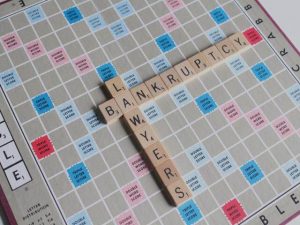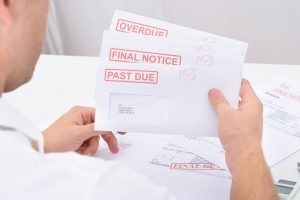Content Reviewed by:
Dave Gormley •
November.28.2020
Vertified Content
Nov 28, 2020
| Read Time: 5 minutes
This post gives you a road map of the “usual” Chapter 7 and Chapter 13 Bankruptcy. I wrote it to give my clients, and prospective clients, a good general outline of what to expect if you need file for bankruptcy.
Of course, not all bankruptcy cases follow the usual format. Your case may take some detours from this general outline.
There are two preliminary steps you must take.
Article Contents
(1) First, hire a Maryland bankruptcy attorney.
You probably cannot do this yourself. You should hire an attorney to file your bankruptcy. It is that complicated.
Before the Bankruptcy Reform Act of 2005, if you had no assets whatsoever you could file your own Chapter 7 case. That is no longer advisable. The 2005 law made bankruptcy a complex process far more involved than just filling out forms. Theoretically, you can still do it yourself, but you will have to be very, very diligent. We do not advise it.
Before you take action, you should get a FREE consultation with a Maryland bankruptcy attorney who can come up with a plan for your own unique personal situation.
(2) Second, complete a financial statement and gather documents.
There is a lot we need to know about your debts, income, expenses, etc.
Therefore, you will have to do some homework before you actually file for bankruptcy in Maryland. But please note you do NOT need these documents for your consultation. We can sketch out your options for you without any need for documentation. But when it comes time to file, you do need these documents.
Here is a list of documents you need to gather eventually, and things we need to know. When you hire us we will give you a packet with all the information we need from you including a check list of the documents.
- All current sources of income (including paycheck, pension, social security, child support, alimony, etc).
- Documentation of all recent major financial transactions (like the sale of a house or car).
- Itemization of your monthly expenses.
- All of your debts. (Important! If you do not include a debt during the administration of your case, that debt may not be discharged and you will remain liable for it. Be sure you include all debts you owe when compiling this list.)
- Two years of tax returns.
- Deeds and titles to all real and personal property (like the deed to your house, the title to your car, etc.).
- Certificate of credit counseling. When you file for bankruptcy you need to take two classes. For more information on these classes see our post on The Bankruptcy Classes.
You will have to complete an information packet, including a detailed financial statement. The financial statement lists all of your debts, assets and expenses. When you retain us we will give a packet and take the time how to complete the questionnaire. This packet will be used as the raw data for drafting your bankruptcy petition.
You can consult with an attorney at any time, and we encourage you to do so sooner rather than later. You need to know your options, and you should plan ahead in case bankruptcy is the right option for you.
What Is the process of bankruptcy in Maryland?
After you meet with the attorney and go through the means test, you will know if Chapter 7 or Chapter 13 is right for you.
Then we will give you the financial packet, and you will have to bring us the required documents mentioned above.
There are several steps in every bankruptcy in Maryland.
Step 1 – Credit Counseling:
You will have to take a credit counseling class, which can be done online or over the phone. Most people find the class will take about 2 hours to complete. We will provide you the list of approved court counselors and we can recommend a few that other clients have liked. We can walk you through this step.
Step 2 – Draft Petition:
Your Petition for Bankruptcy will be drafted which includes all of your information and is designed to show your current financial situation. A “Petition” is the name of the formal document you file with the Bankruptcy Court to start the bankruptcy process.
Step 3 – File the Petition:
Once the petition is drafted you will need come in to review it and sign it. The petition will then be electronically filed with the US Bankruptcy court in Maryland. Once the case is filed you get a case number, and the automatic stay goes into effect.
If you file a Chapter 13 bankruptcy, a repayment plan will be filed along with the Petition. Your attorney will create the plan, but in general, the plan will look at your net monthly income, subtract reasonable expenses (which are governed by the new bankruptcy statute) and see if there is income left over. If there is, that amount will go to pay your creditors. If you are filing a Chapter 13 to protect an asset you can’t protect in a Chapter 7, you need to pay back what the creditors would get in the Chapter 7.
Step 4 – Financial Management Training:
Before completing the bankruptcy process, you must take a financial management course. This is in addition to the consumer credit counseling class you already took. A Maryland bankruptcy attorney can help you set up this class as well.
Step 5 – Meeting of Creditors:
After you file your bankruptcy petition, the Trustee will hold a “meeting of creditors.” This is also sometimes called a “341 meeting” because that is the section of the code that governs it.
Before the meeting you will need to provide the trustee with pay stubs, tax returns and bank statements.
You will have to appear at the meeting and the Trustee will interview you. Your attorney will be present for this meeting. Your creditors are allowed to appear and ask questions, but they do not usually show up. For more details on what happens at a 341 meeting, click here.
The Trustee and the creditors will be trying to make sure you have disclosed all of your assets. The Trustee will ask you questions about your assets and debts, to confirm the information in your bankruptcy petition is true.
The Next Steps
Here is where the Chapter 7 and Chapter 13 cases diverge. For your Chapter 7 case there may not be much more for you to do than wait. If you are in a Chapter 13 you have a bunch of payments to make and we have to get your plan approved. Click here for the Next Steps in a Chapter 7. For the Next Steps in a Chapter 13 click here.









